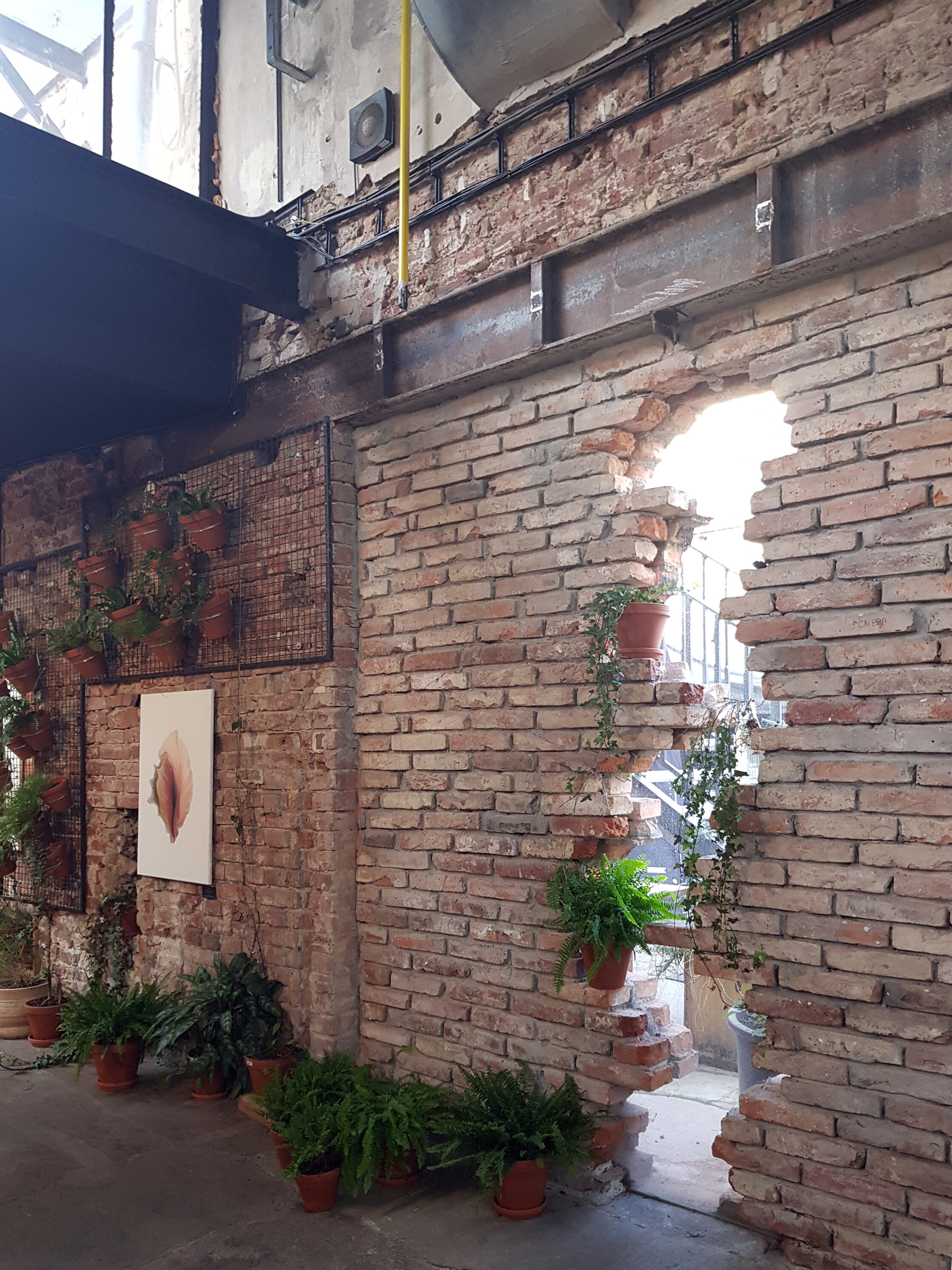


Vnitroblock, a former factory in the courtyard of a tenement block, caught my eye when I was attending a workshop in Prague. These photos taken during my visit reveal how what was once a defunct industrial site ready for demolition has been transformed into a bustling leisure, exhibition and event space and cultural centre that serves the local youth community.
Started as a bottom-up process by two young entrepreneurs, Vnitroblock is now a hub of creativity that offers a unique blend of dance, art and music in a welcoming atmosphere within the former industrial building. In addition to the Signature Café, which has become a preferred study spot for students who can enjoy a coffee in a diverse environment, the venue also hosts live DJs, showcases art exhibitions, conducts DIY workshops, runs an underground movie theatre, and even features a specialist sneaker store.
The industrial character of the former factory has been preserved, and only strictly necessary interventions have been made in order to maintain the genius loci of the building. The original materiality and tectonics are still visible, creating an environment that bridges the past with the future. In some instances, what might be considered defects in the building are converted into strengths, reminiscent of the Japanese concept of kintsugi. For example, one of the images shared here shows a ‘cracked’ wall, where an uneven opening in the wall has been glazed with transparent glass and now gives a sneak peek of the activities happening outside. The palimpsestic quality of the façade has been retained by keeping the layers of the wall, including the graffiti.
Adaptive reuse’s preservation and poetic potentials are as intriguing as its practical and sustainable outcomes, especially with regard to modern and recent heritage. I believe initiatives like Vnitroblock can play an essential role in creating spaces that anchor our communities.
By providing a platform for people to enjoy, express their creativity, and socialise while preserving the history and heritage of the city, the project brings together people from diverse backgrounds, something that is especially important in today’s world where technology can isolate us. In addition to being crucial for sustainability, reusing valuable modern buildings helps us stay connected to our recent past.
